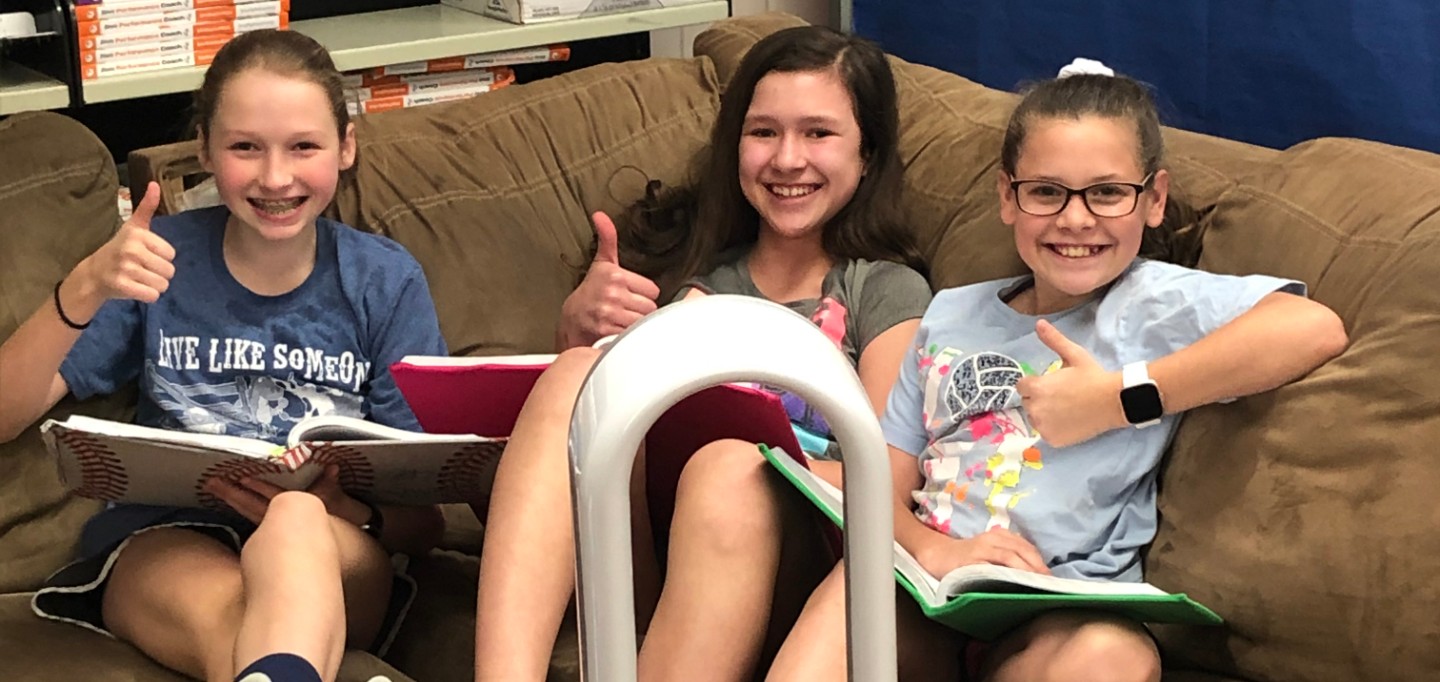Funded Projects
Uncategorized
New Books for High School English ClassesJune 9, 2023


The hotter the planet grows, the less children are learning. An article published in PBS News Hour states, “Extreme heat lowers a child’s ability to learn, according to an examination of 10 million American students that shows hotter school days reduce standardized test scores. Based on the analysis, every 1-degree-Fahrenheit increase in average outdoor temperature over a school year reduces learning by 1 percent.” Every 1-degree-Fahrenheit increase in average indoor temperature also reduces learning by 1-percent, and these deficits in learning were shown to compound yearly. The good news is that these hot temperature effects can be reversed by keeping the classroom cool. A cooler classroom can “offset 73 percent of the learning reductions caused by hotter days” the study found. While there is not much that Mrs. Chrastka can do to keep it cooler outside the classroom, the addition of a super powerful, yet quiet, oscillating fan will go along way towards lowering the temperature inside her classroom.
Mrs. Chrastka teaches 6th through 9th grade math and 9th grade English. The students in her classes will not only stay cooler due to the Dyson Pure Cool fan, funded by a Cissna Park Education Foundation grant, but will also experience a quieter and more purified learning environment. The Dyson Pure Cool fan “captures 99.97% of particle pollution which will improve the air quality in the classroom and uses an Air Multiplier technology that amplifies surround air, giving an uninterrupted stream of purified airflow.” Another benefit of the fan is how much quieter it runs versus the average box fan. Classroom noise is another factor in learning. Sarah D. Sparks’ article published in Education Week, entitled ‘Low-Level Classroom Noise Distracts, Experts Say’, quotes Gail M. Whitelaw, the director of the Ohio State University Speech-Language-Hearing Clinic in Columbus, Ohio. “When kids have high anxiety, and we are adding noise in the classroom, they are struggling to follow the teacher and they are getting exhausted by the end of the day,” Ms. Whitelaw said. “We know that’s a big factor in student performance.”
Sixth graders, Emma, Lilyana, and Natalie were so excited when the fan was delivered to Mrs. Chrastka’s room in November, but it was already too cold outside to use on a regular basis. However, they were more than willing to act out how much cooler they felt when the fan was running. All students looked forward to warmer weather in the spring, and the improved learning environment it would help create. Unfortunately, school closure due to COVID-19, has kept Mrs. Chrastka’s classroom empty, and the fan safely stored in a box until school reopens in the fall. With a quieter, cooler classroom, Mrs. Chrastka knows her students will be better prepared to learn.